
Toyota's effort to expand decarbonization options through the Super Taikyu Series heads into its third year. At the latest season opener, a group of like-minded partners spoke about their new energy projects.
A comprehensive approach with many partners
President Sato
In the carbon-neutral future we envision, the key is offering diverse options that cater to local energy and economic conditions, as well as social and cultural differences.
We describe this approach as a “multi-pathway” strategy.
Alongside electricity and hydrogen, we also believe that HEVs (hybrid electric vehicles) and PHEVs (plug-in hybrid electric vehicles) hold great promise for filling the gap as transitional technologies.
Just as President Toyoda (currently Chairman) spoke of “taking all of them seriously,” we are striving to discover the potential of every option.
How do we deepen collaboration across many industries and get more people on board in using hydrogen? I don’t think this is a question that the auto industry can figure out alone.
Infrastructure also has a significant impact on the broader adoption of hydrogen.
Without progress on the “producing” and “transporting” sides, usage will not increase. That is why comprehensive, multidisciplinary efforts to create the environment for a hydrogen society are crucial.
Also in attendance were Kawasaki Heavy Industries President Yasuhiko Hashimoto and Iwatani Corporation President Hiroshi Majima, who continued to explain the importance of creating the right environment for a hydrogen society.
President Hashimoto
No matter how hard we push on the “using” side alone, or the supply chain, hydrogen will not get anywhere.
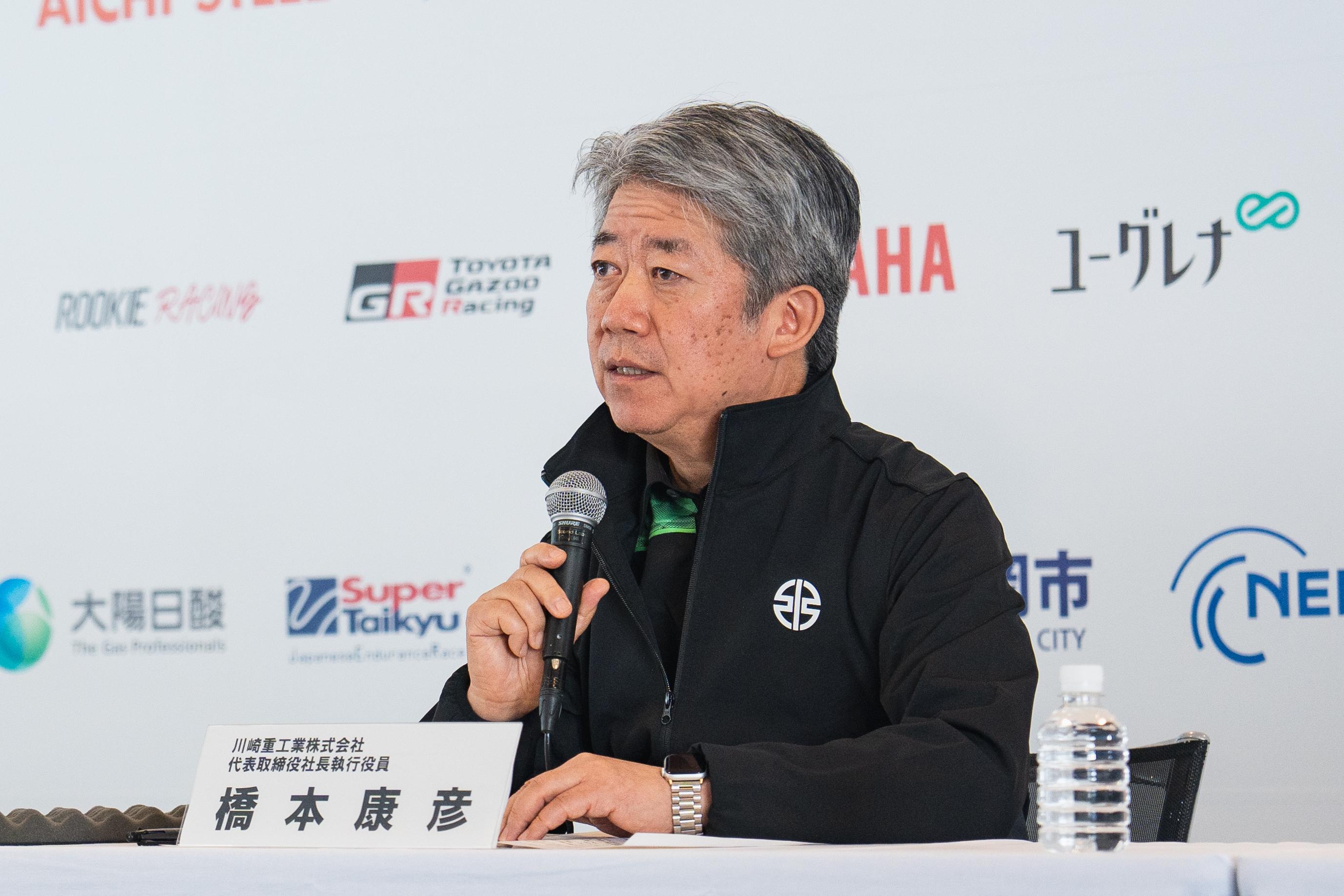
Unless the supply chain and users work in a unified cycle, so that the producing and using sides are running concurrently, it doesn’t matter how much we expand the supply chain, since there won’t be anyone buying, or places to use, our products.
The infrastructure for hydrogen, and opportunities for use, will expand by having as many partners as possible adopting it for various purposes.
Natural gas spread in a similar way—growing use led to diverse applications, which lowered the price and made it accessible to everyone.
Whenever energy demand changed in the past, people similarly questioned how the new forms of energy would be used.
What guided them through was the sense of purpose of those who believed in the new energies and sought to spread them around the world.
We were inspired to be part of this effort by Toyota’s purposeful passion and action.
I believe that era-defining change is only possible with this kind of leadership. We agree that diverse options are crucial for pursuing carbon neutrality.
We also believe that hydrogen will be an indispensable and substantial source of energy for our future, through which everyone can contribute to carbon neutrality.
President Majima
At Iwatani, we have been involved in the hydrogen business for more than 80 years, establishing operations that span everything from the procurement of raw materials to the production, transportation, and supply of hydrogen.
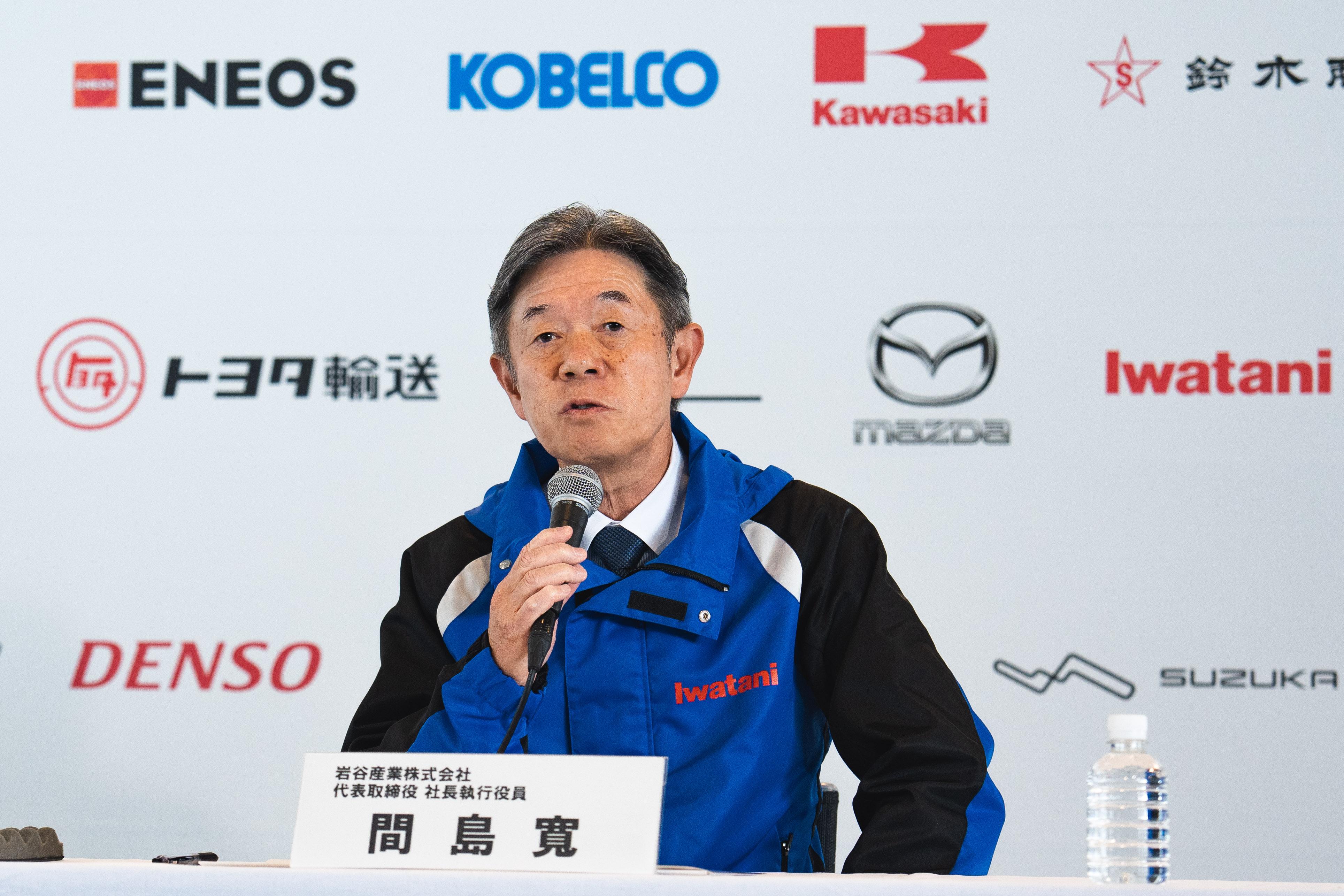
At present, we enjoy a 70% share of the domestic hydrogen market. We are also the only company in Japan commercially producing and selling liquid hydrogen.
In Super Taikyu, we are responsible for fueling the liquid hydrogen-powered Corolla.
We currently supply hydrogen for fuel cell vehicles (FCEVs) at more than 50 hydrogen stations around Japan. However, as we move up in size to buses and other large vehicles, we will encounter challenges in delivering compressed hydrogen.
The biggest hurdle is filling the hydrogen safely and quickly, which is why we are developing dispensers (to supply hydrogen at higher pressures). And beyond that, one of the main challenges will be refueling liquid hydrogen, as in this race.
By taking part in efforts such as this, we hope to find uses more broadly in other forms of mobility.
Striving to create more options
Meanwhile, Mazda is taking on the Super Taikyu with biodiesel.
The company team competes under the name Mazda Spirit Racing. Senior Fellow Ikuo Maeda, who is also responsible for Mazda’s brand design, serves as both the team representative and one of its drivers.
At the press conference, Maeda announced a new undertaking.
Team Representative Maeda
Our goal now is to move beyond the closed environment of racing to make biofuels available for use by more people, as we work towards commercialization.
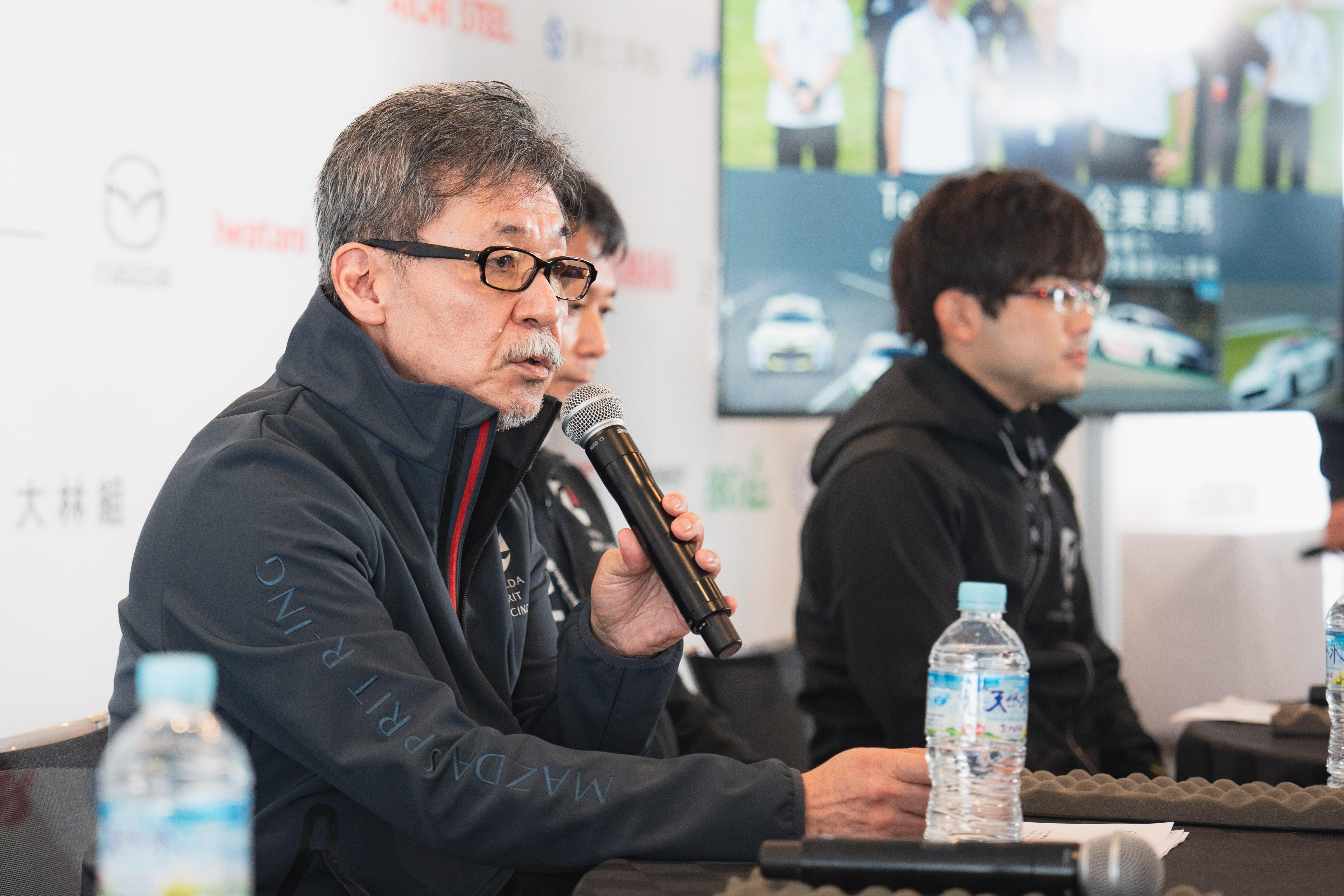
To increase our options within the technology we possess, in addition to racing with biofuels, we are looking to field a carbon-neutral fuel roadster like those from Toyota and Subaru from mid-season.
The 86/BRZ duel looks like so much fun, we want to get in on the action too.
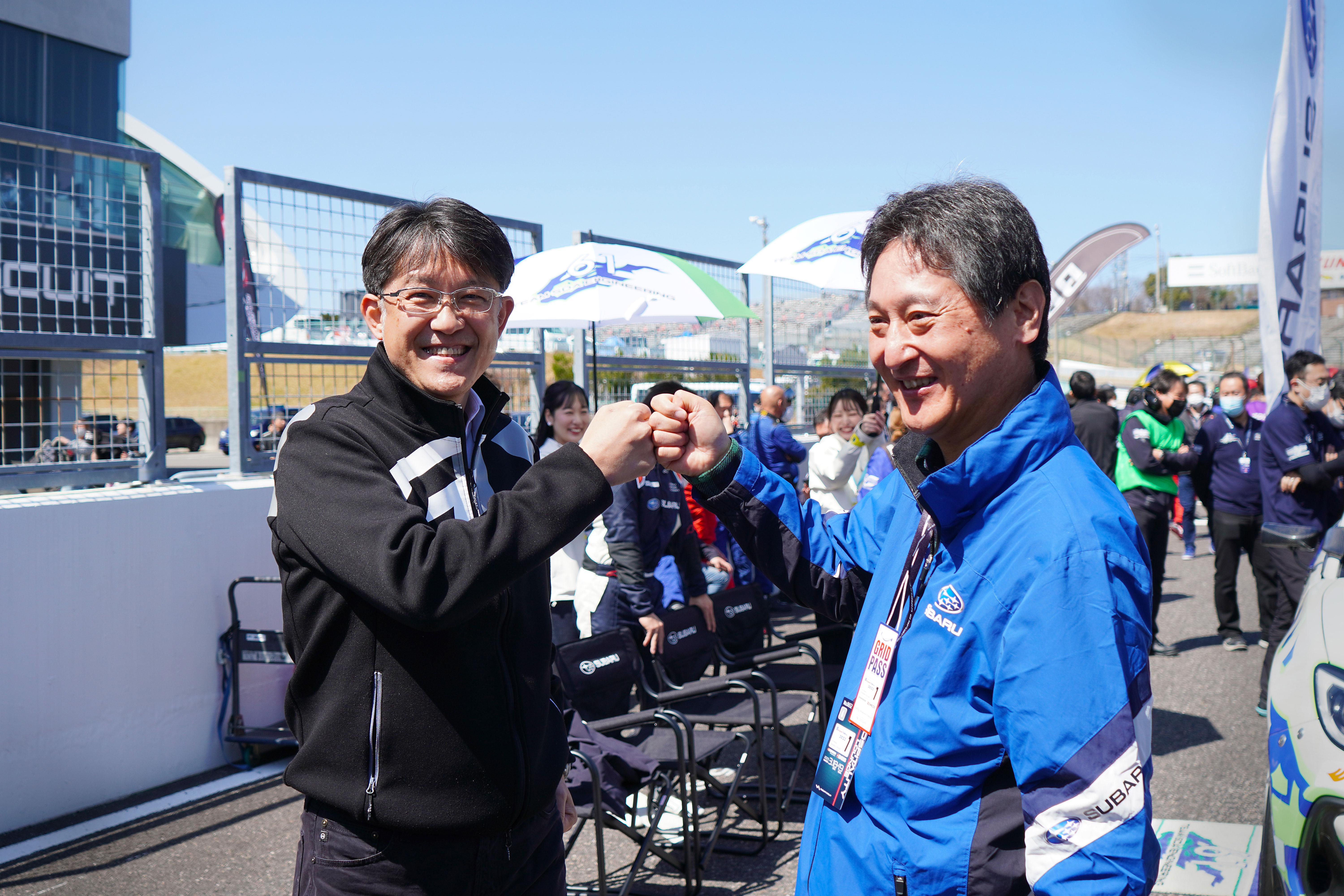
We're considering a second car (in addition to the Mazda Spirit Racing Mazda3 Bio concept) and figure that a (carbon-neutral) roadster would make the Super Taikyu even more exciting. We will let you know when we’re ready to enter the fray.
Program Manager Hiroshi Kinoshita oversees Mazda’s carbon-neutral strategy. He provided the latest updates on biodiesel fuel.
Program Manager Kinoshita
Our biodiesel fuel development has been constant and ongoing.
Using the exact same systems, from control to calibration (optimizing combustion according to fuel properties) and engine hardware, we can get biofuels to produce efficiency and power on par with regular diesel.
We’ve now got the cars running just as you’d expect, without impacting even the sound.
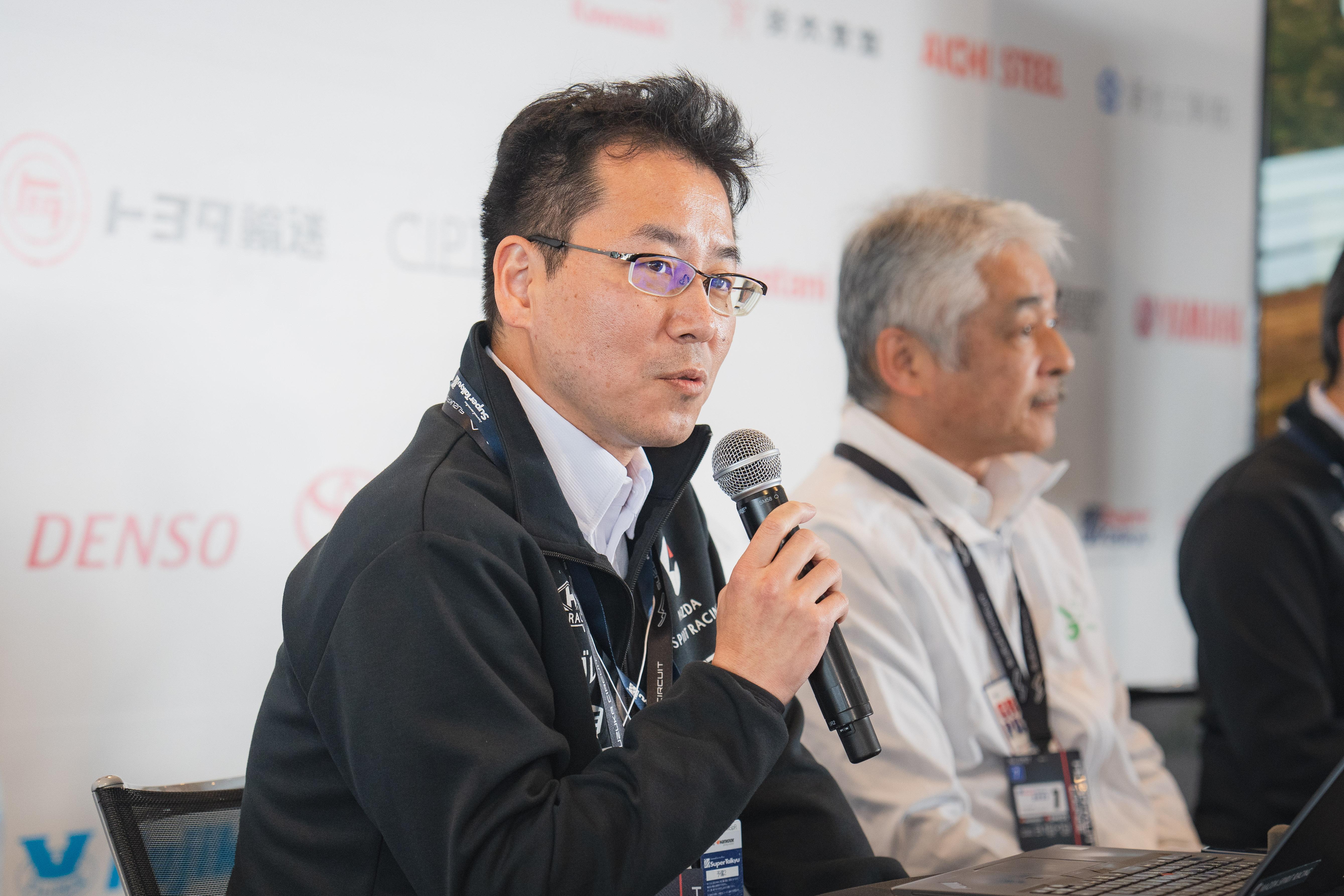
Our Susteo HVO (Hydrotreated Vegetable Oil) is already available to the public in Japan as part of diverse options for making mobility carbon neutral.
Although not the same as the 100% bio-derived race fuel, our Susteo 20, which blends 20% HVO with diesel, has been on sale to the public in Nagoya since last year.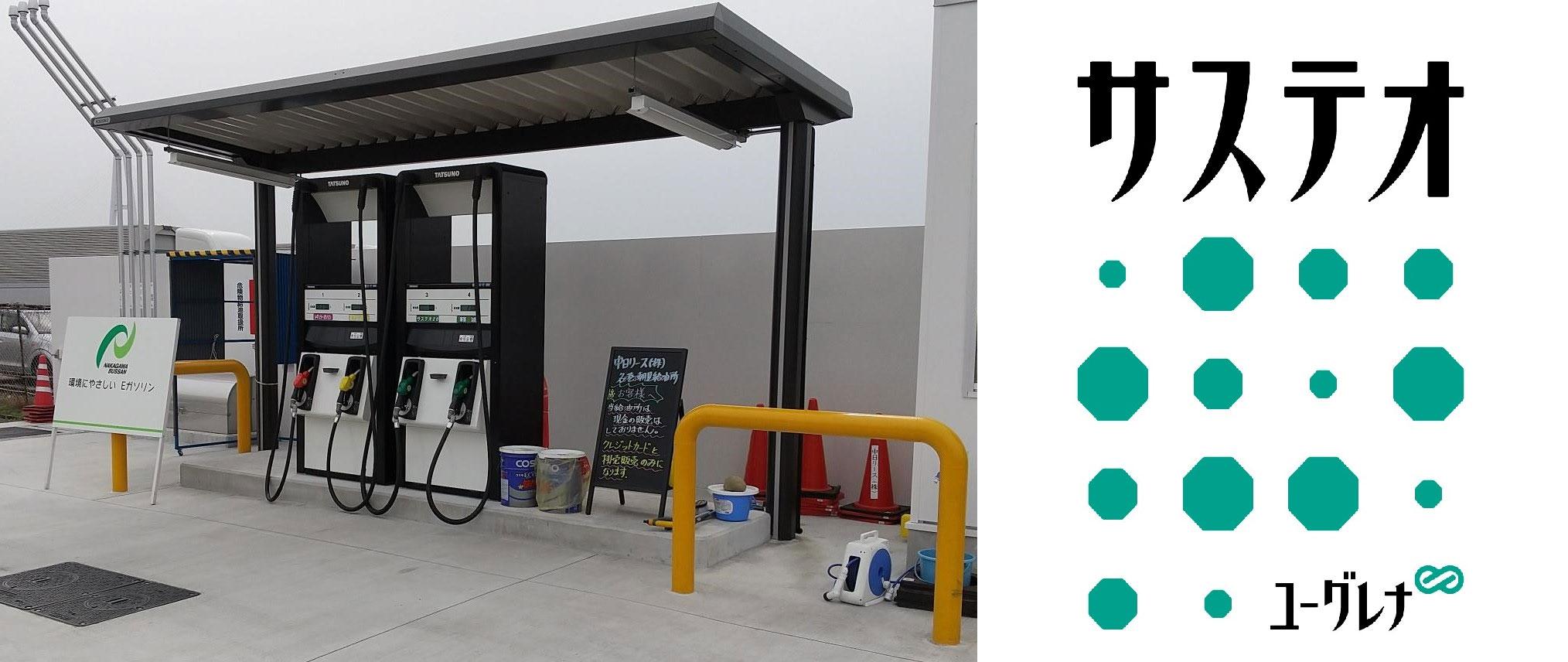
HVO was also launched in Europe just ahead of Japan. We want to match the European scope of compatible fuels while ensuring reliability and quality through the rigorous environment of endurance racing.
Over the past year, we have been able to demonstrate the use of biofuels in existing diesel engines. I feel that we have approached carbon neutrality as a Japan-wide effort, including partnerships with other manufacturers and industries.
Korehiro Odate, Energy Company CEO at the biodiesel fuel supplier Euglena, spoke about the costs going forward.
Energy Company CEO Odate
We plan to build a commercial plant in Malaysia by the end of 2025, which will give us 5,000 times our current production capacity.
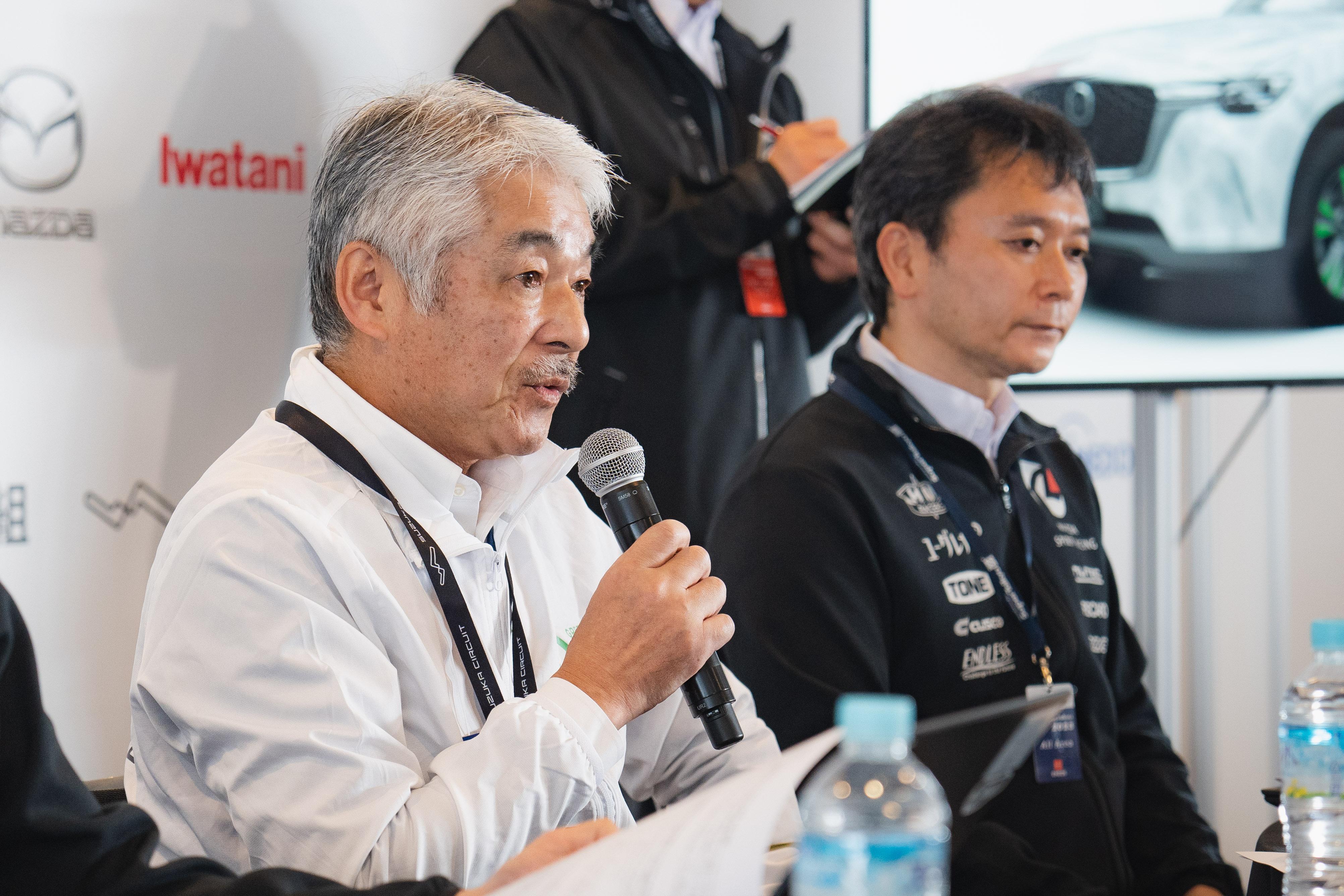
As with petroleum-based fuels, fuel prices are prone to fluctuating with exchange rates, but we are aiming for below 200 yen per liter.
The liter price of Susteo HVO has also fallen to less than one-tenth of the 10,000 yen it was when we raced at the Okayama International Circuit (Mimasaka, Okayama) two years ago.
We are set to continue steadily lowering costs. Fuels are a business that benefits from economies of scale, with prices largely dictated by the volume produced.
We have drawn up a roadmap for lowering costs by increasing scale and are making steady progress along that path.

